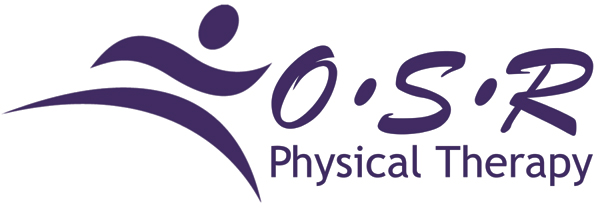Great job to the Minnetonka Girls Basketball team on their win over Eden Prairie last Friday!
Monday, February 18, 2013
Sunday, February 17, 2013
Minnesota Dance Team State
We were proud to support our patients and all of our teams and surrounding communities at State. Great job and kudos on all of your hard work and dedication to get to this level of performance!
Monday, February 11, 2013
OSRPT Mound Westonka Performer of the month
OSR Physical Therapy is proud to support our local communities.
Here is the January OSRPT Mound Westonka Performer of the month
Name: Tyler Jordahl, senior
Here is the January OSRPT Mound Westonka Performer of the month
Name: Tyler Jordahl, senior
Parents: Chantelle and Derek Jordahl
Activities: Orono/Mound Westonka Swim & Dive, Soccer, DECA
Achievements: Tyler
has won all dual meet and invite competitions this season, not just in
January. Tyler broke his six dive and 11 dive team records twice during
January and won the diving event at the True Team Section and True Team
State meets.
Comment from Activities Office:
"Tyler continues to personify consistency this season as he excels in
all meets. We are proud of his current accomplishments and look forward
to his run at Sections and State."
Sunday, February 10, 2013
Reference list update for All State Dance Education Summit
In follow up to the All State Dance Education Summit held at the Perpich Center for Arts Education in Golden Valley, MN, here is the updated reference list for the presentation: Fitness & Nutrition Strategies to Optimize Performance. Thanks for joining me in a great learning and sharing experience!
¨Butulis, M. (2010). How to Organize a Practice Year. Created for Advantage
Dance.
¨Clark MA, Lucett SC. (2010). NASM Essentials of Sports Performance
Training. Wolters Kluwer.
¨Earle, RW, Baechle, TR. Ed (2004). NSCA’s Essentials of Personal Training.
Human Kinetics: Champaign
¨Glace, B (2008). Nutrition, Hydration, Metabolism, and
Thinness. Dance Medicine: Strategies for the Prevention and Care of
Injuries to Dancers.
American Physical Therapy Association.
¨International Association of Dance Medicine and Science.
(2003-2005). Dance Fitness. www.iadms.org
¨International Association of Dance Medicine and Science.
(2003-2005). Fueling the Dancer. www.iadms.org
¨Ivy J & Portman R (2004). Nutrient Timing. Basic
Health Publications: Laguna Beach
¨Katch, VL, McArdle WM, Katch FI. (2011). Essentials of Exercise Physiology. 4th
Ed. Wolters Kluwer.
¨Koepp, K, Janot, J (2005). Tapering: Science and Practice. IDEA Fitness
Journal 2 (8).
¨National Sleep Foundation. How
Much Sleep Do We Really Need? www.sleepfoundation.org
All-State Dance Education Summit
Thank you for learning and sharing with me at the Dance Education Summit at The Perpich Center for Arts Education in Golden Valley, MN this weekend.
In follow up to the presentation on Fitness and Nutrition Strategies to Optimize Performance, here are a few case studies. Please feel free to reply with thoughts, questions, and ideas on these cases. Also reply with any real life questions you may have on applying these concepts! If it is more of an individual question, please email Meredith at meredith.butulis@osrpt.com.

Case 1:
You are teaching a school-based course for 9th-12th grade dancers. Most of them also compete with a studio. It is currently February. The studios in your area compete from mid-March through early May.
Questions:
In follow up to the presentation on Fitness and Nutrition Strategies to Optimize Performance, here are a few case studies. Please feel free to reply with thoughts, questions, and ideas on these cases. Also reply with any real life questions you may have on applying these concepts! If it is more of an individual question, please email Meredith at meredith.butulis@osrpt.com.

Case 1:
You are teaching a school-based course for 9th-12th grade dancers. Most of them also compete with a studio. It is currently February. The studios in your area compete from mid-March through early May.
Questions:
- What phase of periodization would be optimal for your lesson plans at this time?
- How does this influence your lesson plan?
- Most of your dancers would benefit form late pre-season training right now. This would mean there is a moderate-heavy focus on skills, rehearsals, choreography, and flexibility.
- Resistance training would utilize strength variables at this point. That would be (2-6) x (1-6) with a heavy load and 2-5 min rests between sets
- Cardiovascular training would have an emphasis on both anaerobic and aerobic training. Consider using a 1:2 ratio. For example, do something full out for 1 minute and then lower the heart rate back below the anerobic threshold for 2 minutes to recover.
- How would your plans change if you have the same group of dancers, but it is now April?
- Moving to in-season guidelines would be suggested. This includes a decreased emphasis on resistance training and minimizing the long-duration low-intensity cardiovascular conditioning.
- This is a great time to focus on technique and choreography.
- If you are working on high intensity moves like leaps, tricks, and lifts, observe the guidelines of low sets x reps and offer 2-5 minute rest periods if you are going to dedicate a lot of time to this area in a practice/rehearsal. For example, perform the challenging move 3 times. Rest for 2 minutes. Repeat the process 3 times. After that, move onto working on something else.
Saturday, February 2, 2013
Subscribe to:
Posts (Atom)





